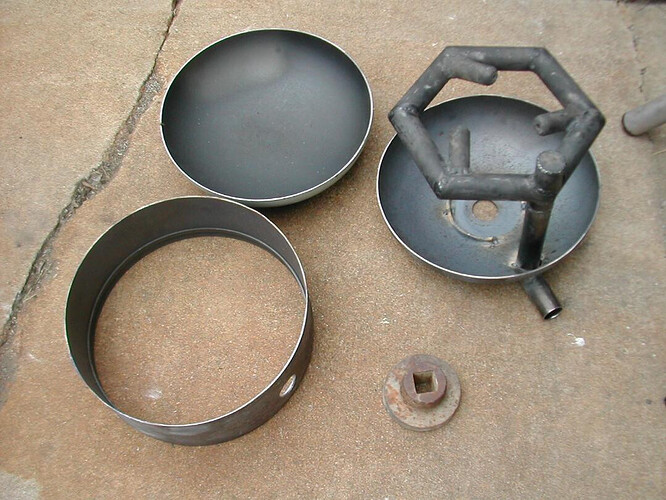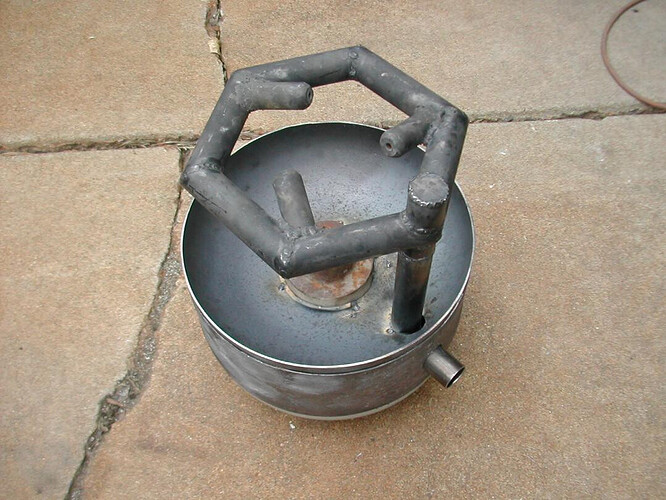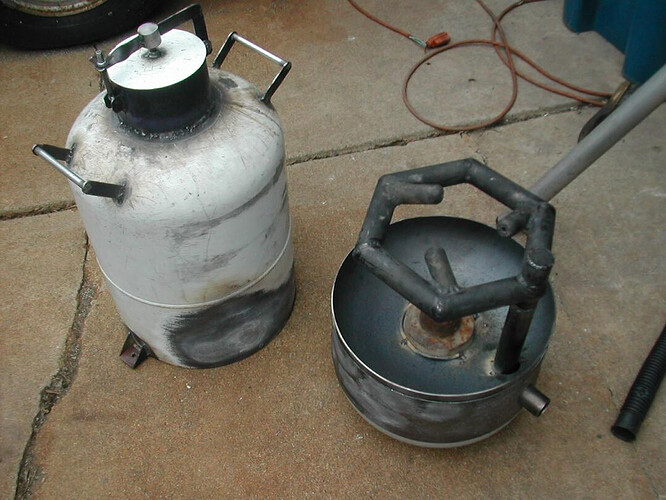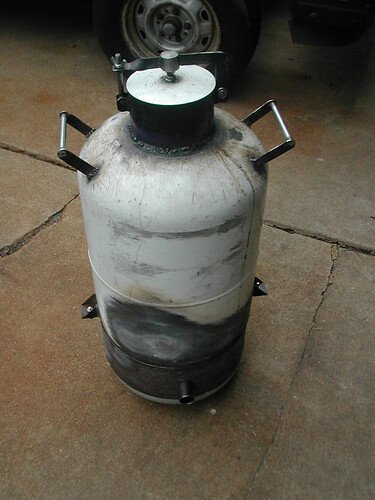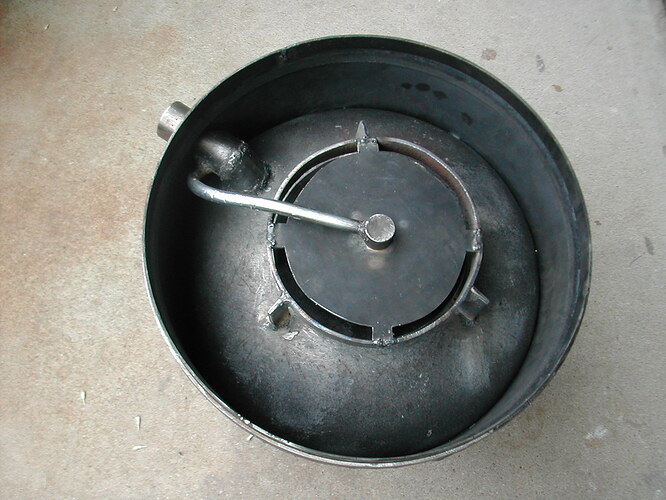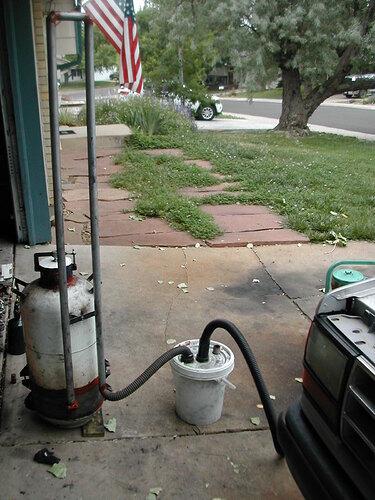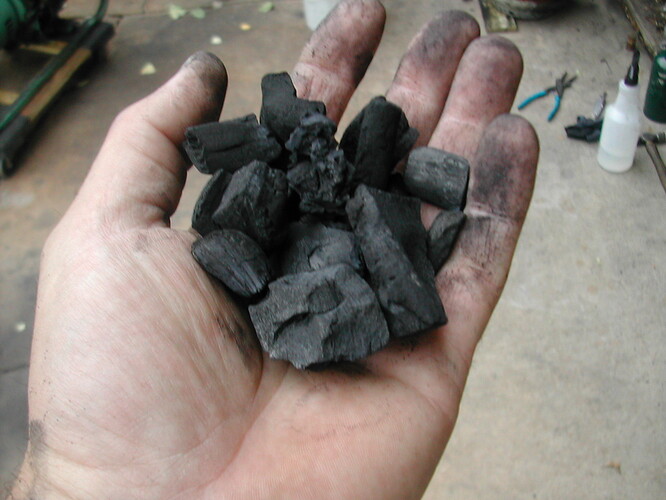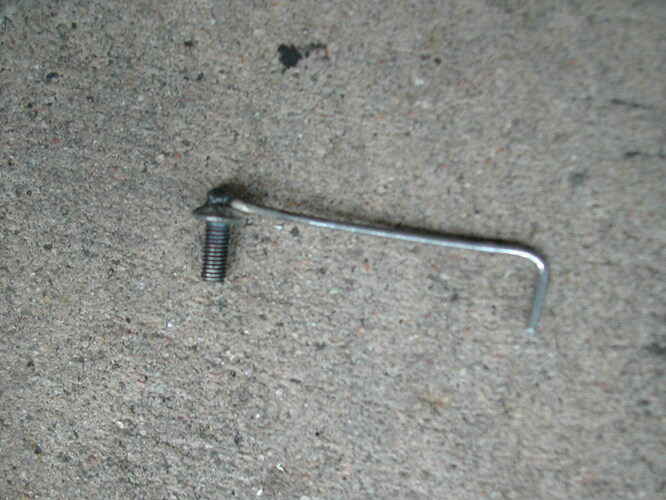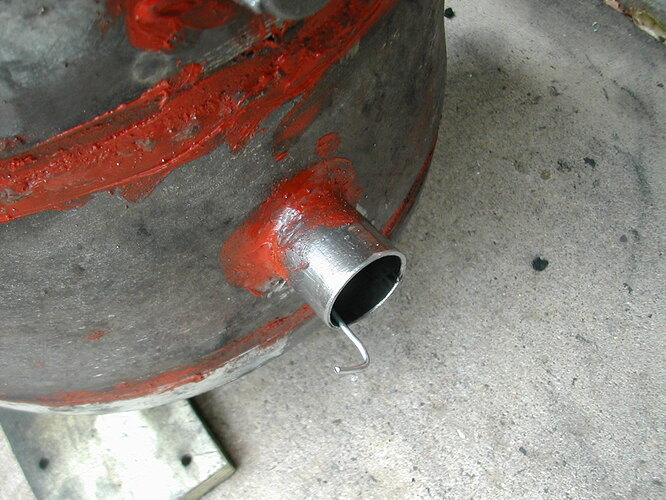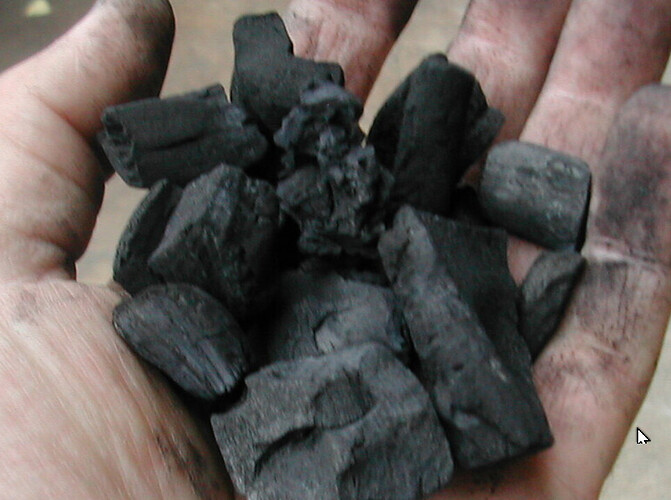That looks really nice Rindert, i really like the “vortex” nozzle ring, looking forward to hear about the progress ![]()
That heat exchanger looks awesome, but will this system be designated for low flow small engines, so as not to coat the heat exchanger with soot? And how will you be able to keep the heat exchanger clean is there a clean out port or someway to get compressed air in there to blow it off?
Good point marcus, everytime i thinks that i have a better way ill check on this forum. Find where Wayne or somebody has tried it with bad results. I’m optimistic that one or more of my ideas will be better but for now hats off to you that have gone before
That’s a really good question Marcus. Years ago I raised a similar question and @k_vanlooken pointed me to old data about steam boiler tubes and the velocity of gases needed to keep them free of dust. So… I thought I should make the top cover removable and put a clean out port at the bottom. Maybe that whole structure will function as a cyclone filter, which might not be bad if there’s a way to clean it out from the bottom. I’m hoping the spiral shaped fin will keep itself clean just by centrifugal effect. I imagine that condensate mixed with dust is going to make a gooey mess in there so I might have to insulate the outer shell. But maybe that cake of soot inside the shell will act as insulation so I won’t have to. And maybe the soot cake will restrict the passages just enough in certain areas to where velocity will increase to the point where no more cake forms. That’s the best case scenario. This is a big experiment. I’ll see how it goes.
Rindert
I think with it being gas that comes directly from the reactor you won’t have much condensate issues. Maybe dampened at startup and then boiled away.
Finally getting something done. I feel like I’m making one of those Russian wooden dolls, with one inside the other, inside the other. A few pictures.
Rindert
Hi Rindert, i really like your nozzle setup ![]()
Thanks Göran. I am hopeful about that, because I used it in a SimpleFire. It made richer gas than a flute nozzle.
Here is a bottom view of the grate showing the grate blow-off tube. Getting that tube bent to the right shape was a pita. I have something to learn here.
Rindert
How did you get in there to weld this small tube to the pipe?
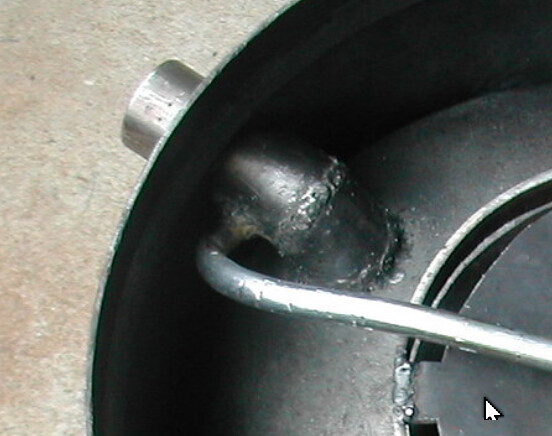
Look at post 46. I welded it before I put that outer cylindrical piece on. It would have made more sense to take the picture before I did that but I didn’t think of it.
Rindert
Great work Rindert , and so well thought out , cant wait to see how well it works .
Dave
Finally I have something to report. My generator ran on pure chargas, no gasoline, for about 45 minutes today.
It took about 2.5 hours of running on a mixture of chargas and gasoline before it started producing gas good enough to run the engine. I’m not very surprised, as I imagine the layers of ash and charcoal establishing themselves to form a good reaction zone.
I welded a little screw to a piece of wire so that I could block off the opening to the grate blow off tube. Not sure I would have had to do that but maybe it helped getting started. It ran without it once it got going well.
The gas cooler seemed to work okay: 278F at the inlet, 111F at the outlet. It’s a 10 foot piece of 1 inch conduit that I cut and welded into the inverted U shape you see.
I installed an ignition port though now I suspect I wouldn’t have had to. I may be able light it through the nozzles using a rag soaked old crank case oil. I’ll try that tomorrow. Part of the ‘other 75%’ I suppose.
It didn’t make a high level of power, maybe 400 watts, ~13% compared to gasoline. Hopefully I’ll learn to operate it better as I go along. My goal is 1500 watts without stopping for 2 hours. That will be something useful, if I can do it.
Rindert
I was going to say the same thing but since I don’t usually know what I’m talking about I figured no point in further revealing how dumb I am. Still, I see a lot more ways for that bigger fuel to bridge.
Was making a little more than 1000 watts today, if my estimate is close. In the picture the heat gun was was using 800 watts and the old vacuum cleaner maybe 2-300 watts. I have it rigged with a dimmer switch so I can use it as a forge and foundry blower. It makes a good variable load.
The paint was smoking on the gasifier. Too hot. I may insulate the inside of the shell with rockwool.
The gas coming out of the cooler was 163F. Also too hot. I’ll have to figure out a better cooler. I know hot fuel will limit engine power.
I made up about a gallon of Kristijan’s ‘rocket fuel’, mixture of raw wood and charcoal. About 1/3rd raw wood. As that slug of fuel went through I saw the power go above 1KW and then back down.
I might actually get 1500 watts out of this thing, with a few more tweaks and experience. I am a little more encouraged than yesterday.
Rindert
If you do use rockwool or ceramic wool, make sure to wet it down with water glass.
Yes. I remember Kristijan saying that he hardened the water glass with a torch afterward. It would mean I have to take it apart. I’m going to wait until I’ve run it a few more times. Maybe as the ash cone forms it will insulate better.
I’d wait and see if the ash cone develops, that’s definitely cheaper than tearing it all apart again.
Do you not have one of those propane flamethrowers? The big scary ones work really well. I tend to use mine to char the outside of wood boards.
All you need to harden water glass (sodium silicate) is CO2 gas at room temperature. You may not want to use it until you are sure the insulation is going to stay permanently. This, of course, is my opinion. ![]()
![]()
